Artists
Richard Serra, Whose Monumental and Confrontational Works Redefined Sculpture, Dies at 85
He is best remembered for his immense, rusted steel monuments that were once reviled and are now beloved by the public.
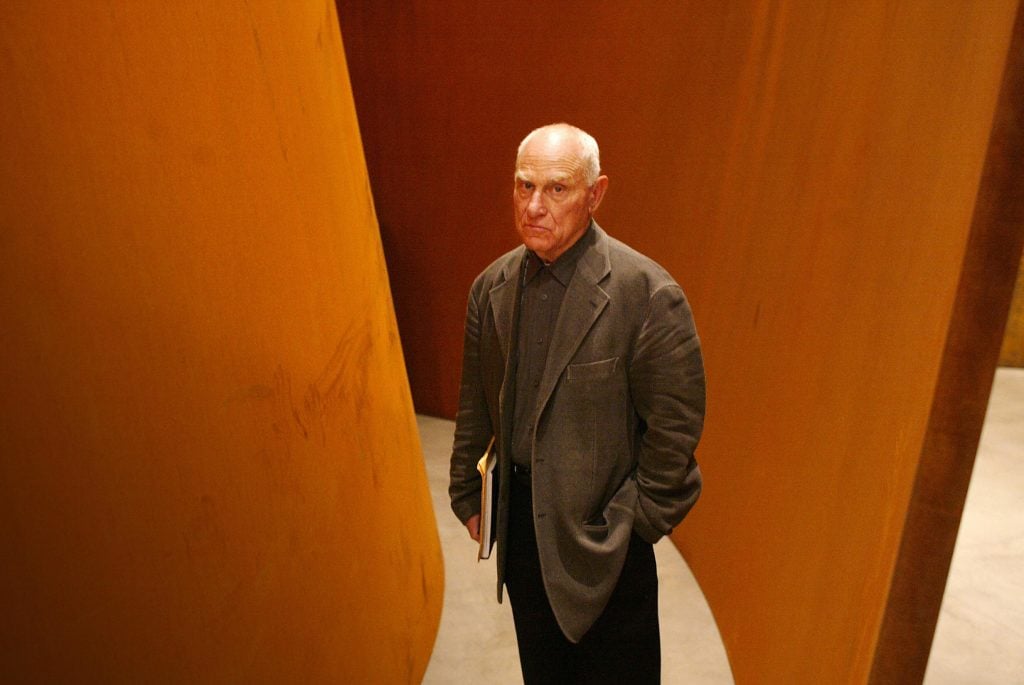
He is best remembered for his immense, rusted steel monuments that were once reviled and are now beloved by the public.

Jo Lawson-Tancred

Of the many artists who ripped up the rulebook and redefined sculpture in 1960s New York, nobody made a statement like Richard Serra. Photos from the time show peers like Bruce Nauman, Donald Judd, and Dan Flavin donning loose shirts as they assembled their neatly restrained, formal conceits. Not so Serra, who more often appeared in heavy protective clothing, goggles, and a gas mask while wielding a ladle used to fling molten lead at the wall.
Resulting works like Splashing, made in the warehouse of his dealer Leo Castelli, and Casting, exhibited at the Whitney in 1969, left an era of dryly minimal abstraction in the dust.
Though many of Serra’s boldest early experiments were inevitably lost, great monuments remain to remember him by. The artist died aged 85 at his home in Orient, New York, on Tuesday, March 26, according to the New York Times. These days, Serra is best known for colossal, curvilinear constructions that can be walked through, like those from his Torqued Ellipse series, as well as his “drawings,” thick black crayon masses encrusted on paper.
After shaking up the insular, self-satisfied midcentury art scene, Serra went on to challenge the wider public with his audacious Tilted Arc (1981), a 12-by-120-foot strip of rusty steel planted in the middle of New York’s Foley Federal Plaza. The confrontational work soon became the subject of heated debate. Bewildered office workers, used to enjoying free range of the square, scrambled to sign petitions that would have this strange, disruptive barrier removed. Writing in the New Yorker, art critic Calvin Tompkins claimed it was “holding the site hostage.”
Combative by nature, Serra had never intended to make an attractive statue for people to stroll past absent-mindedly. “I am interested in creating a behavioral space in which the viewer interacts with the sculpture in its context,” he once said. Tilted Arc was removed after a three-day hearing but expectations about public sculpture as subservient to our gaze were overturned forever.
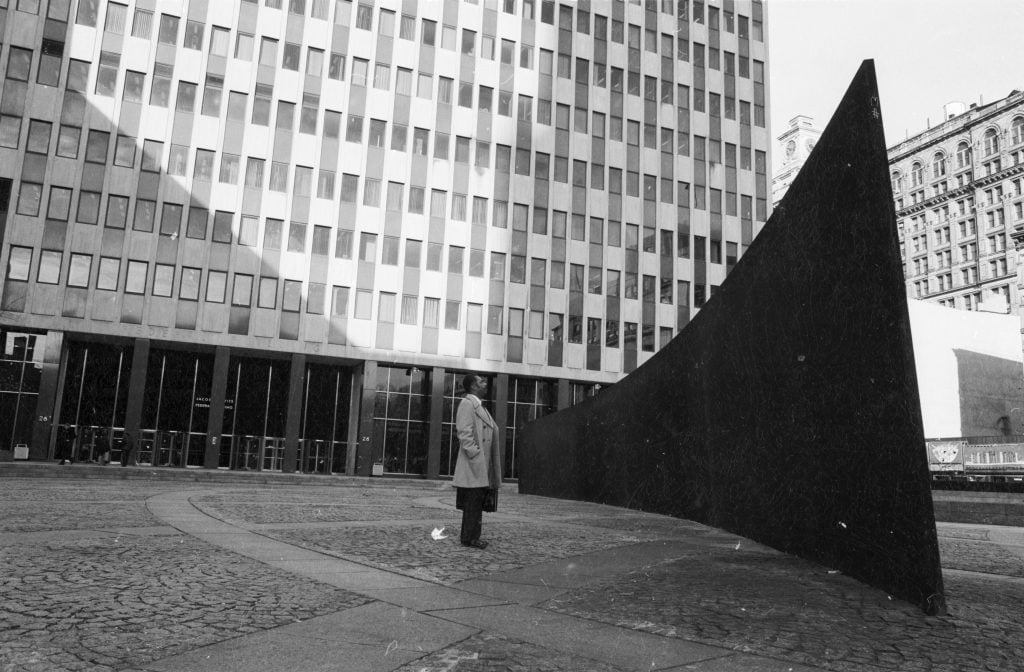
Richard Serra, Tilted Arc divides Federal Plaza in Lower Manhattan, New York in 1981. Photo: Frank Martin/BIPs/Getty Images.
Born in San Francisco on November 2, 1938, Serra began avidly drawing at a young age. One formative experience contains the clues for his life long fascination with matter and mass. At age four, Serra accompanied his father to the shipyard where he worked and watched a tanker be pushed out to sea. Its heft became buoyant in a matter of moments. “All the raw material that I needed is contained in the reserve of this memory which has become a reoccurring dream,” he told BOMB Magazine in 1993.
It was not the last time that Serra’s creative interests would intersect fatefully with an exposure to industrial operations. At college, he majored in English Literature at the University of California, Santa Barbara, where he fell in with an arty crowd but also worked part-time in the steel mills. He went on to study art history and painting at Yale, graduating in 1964.
After a couple years spent skipping around Europe, where Serra became entranced by the work of Constantin Brancusi, he moved to New York in 1966 and was quickly picked up by the visionary gallerist Leo Castelli. A seminal early work was his drawing Verb List (1967), a handwritten list of ways in which raw material could be rearranged or manipulated, for example “to scatter,” “to suspend,” “to curve,” “to roll,” or “to split.” It would be the backbone for all Serra’s later explorations.
Works that evolved from the list include the self-explanatory Thirty-five Feet of Lead Rolled Up (1968) and One Ton Prop: House of Cards (1969), four sheets of metal improbably leaned inwards to create a self-supporting square. Much like the leaning stacks of steel slabs in Serra’s Skullcracker Series (named for the yard where they were constructed by crane), it carried an implicit threat of danger that enlivened the otherwise sterile gallery space.
“Even though it seemed it might collapse, it was in fact freestanding,” Serra explained. “You could see through it, look into it, walk around it, and I thought, ‘There’s no getting around it. This is sculpture.'”
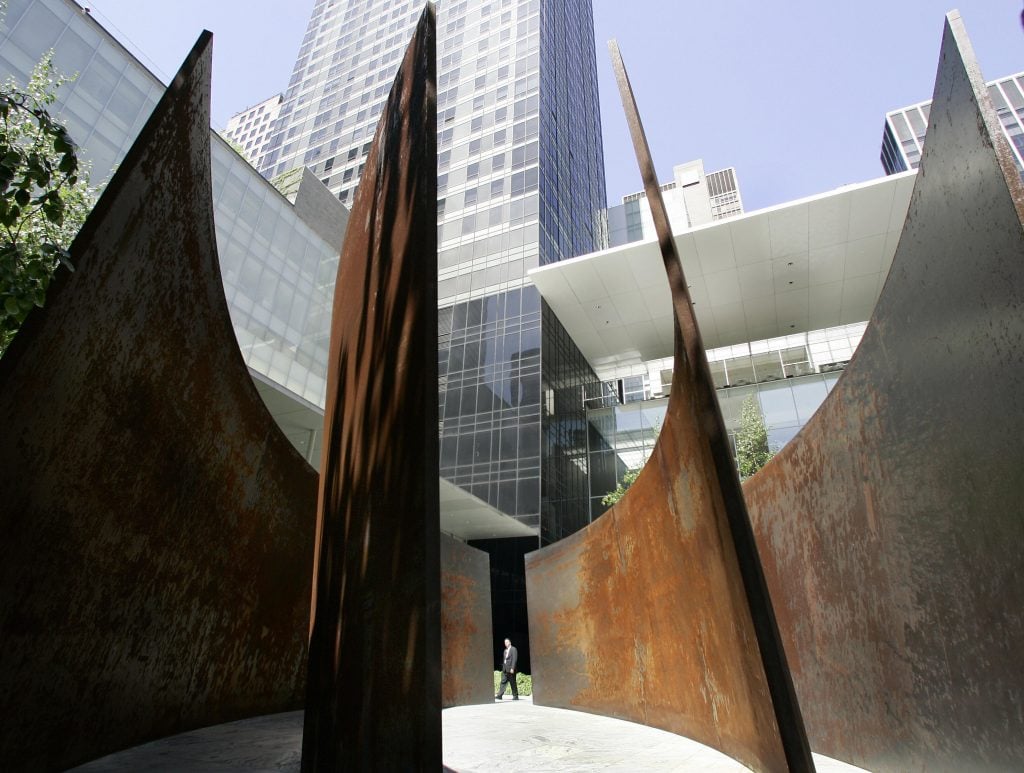
Richard Serra, Intersection II at the Museum of Modern Art, New York in 2007. Photo: Timothy A. Clary/AFP via Getty Images.
Included in the Whitney Museum of American Art’s “Anti-Illusion: Processes and Materials” exhibition in 1969, Serra received his first solo institutional show at the Pasadena Art Museum in California in 1970. Since then, his art has remained in the public eye. To name just a handful of his many urban interventions: Sight Point (1972–75) was installed at the Stedelijk Museum in Amsterdam, Fulcrum (1987) remains a fixture of London’s Liverpool Street, and Serra’s tallest work ever, 7 (2011), towers over the Museum of Islamic Art Park in Doha.
Other works like Clara-Clara (1983), once installed in Paris, and Berlin Junction (1987), which still stands outside the Berlin Philharmonic, are notable for how they shape-shift as the viewer moves through space, opening up to invite us in or closing into an obstructive metal curtain. Viewers are free to run a finger along their crude, copper-toned surfaces.
“Richard Serra was a titan who transformed the very definition of sculpture and drawing,” said gallerist Larry Gagosian. “More than that, he changed us, how we see and feel our way toward an experience that is elemental and sublime. He put us at the center of his art.”
He described the 40 exhibitions that Serra exhibited at his gallery since 1983 as “a tough, exacting challenge, like their maker. Richard leaves a legacy of extraordinary care and empathy that we are not likely to see again. He was my friend and he will be greatly missed.”
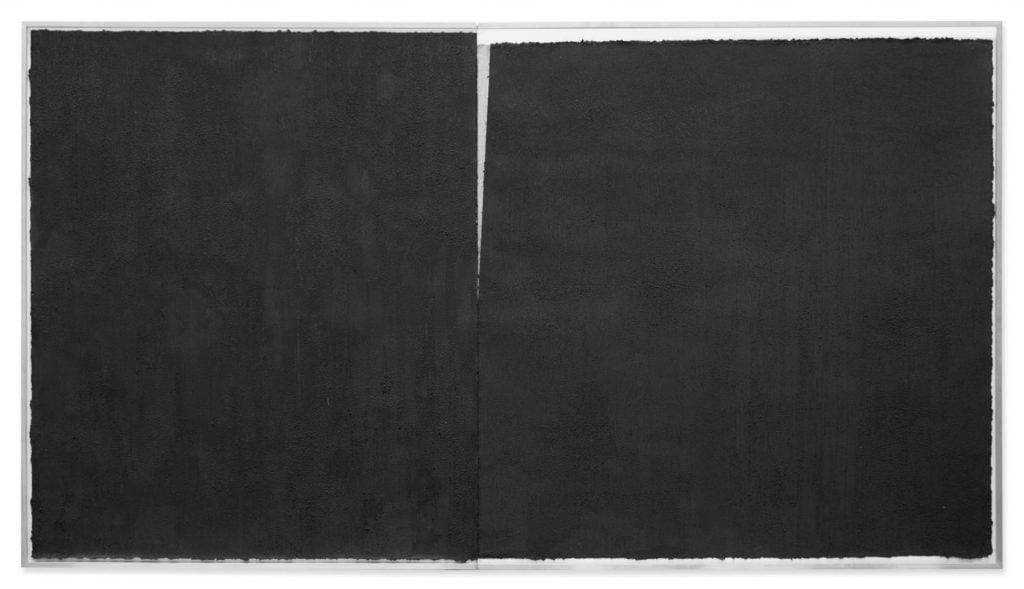
Richard Serra, PeriodicTable (1991). Photo courtesy the artist and David Zwirner, © Richard Serra/Artists Rights Society (ARS), New York.
“Many have said that Richard Serra was one of the greatest artists of his generation. I would go further, and say that he was one of the greatest artists, period,” gallerist David Zwirner said. “The psychological tension inherent in his work set his practice apart and challenged us, the viewers, in utterly new ways.” A new exhibition of Serra’s drawings is scheduled to open at David Zwirner in London next month.
Although Serra once compared museums to funeral parlors, that didn’t stop many of the world’s foremost institutions from carving out spaces to accommodate his immense sculptures. MoMA’s expansion, completed in 2006, featured a high-ceilinged, industrially reinforced second floor specifically to support his 40-year retrospective the following year; SFMOMA’s 2016 redesign included a street-level gallery for Sequence (2006); and the cavernous main gallery of the Guggenheim in Bilbao, Spain, was inspired by the eight Serra sculptures it now houses.
Recent major institutional showings have included a 2013 retrospective that toured the Metropolitan Museum, SFMOMA, and the Menil Collection; Drawings 2015-2017 at Museum Boijmans Van Beuningen in Rotterdam; Films and Videotapes at Kunstmuseum Basel; and Prints at the Nasher Sculpture Center in 2017.
Serra was awarded the Golden Lion at the 49th Venice Biennale in 2001, one of the art world’s greatest accolades.
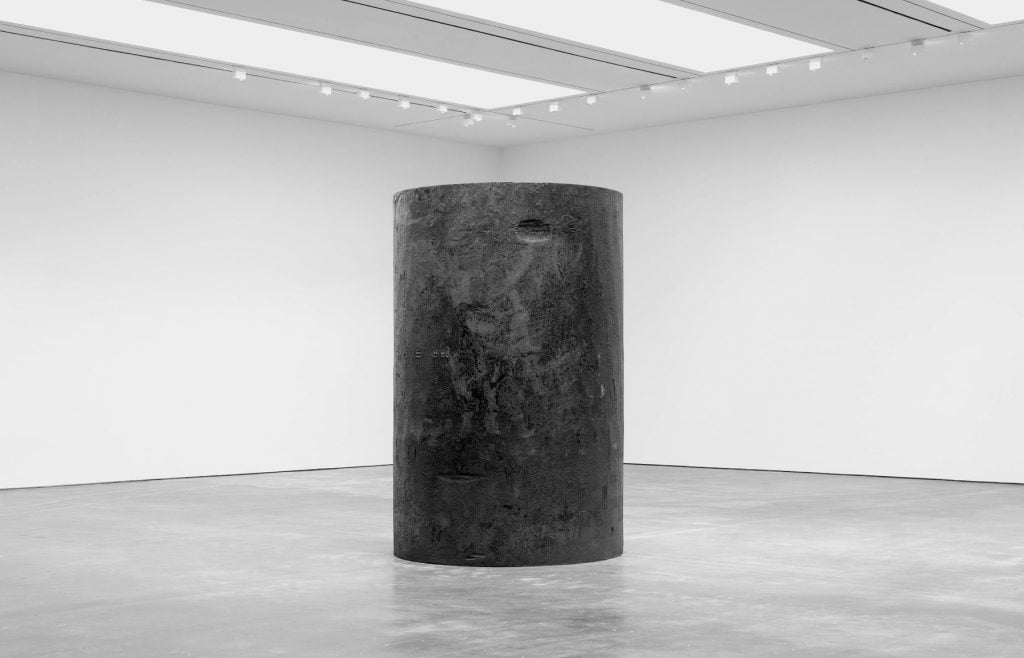
Installation view of “Richard Serra: Sculpture” at David Zwirner New York in 2022. Photo courtesy of David Zwirner.
After a career spanning six decades, Serra produced his final forged steel sculpture, 2022. The austere, rising monolith was exhibited at David Zwirner in New York in the spring of 2022. It revealed an artist who had never lost his ability to command a gallery.
“The experience of exhibiting this work, which to me felt like a sort of closing statement, is unforgettable,” said Zwirner. “It’s hard to overstate what we are all losing with his passing.”